If you are to understand why Bentleys are as they are today, it is important also to understand how they got that way. It’s a tale now 100 years in the telling, or about a year per 15 words of this story. And as I’ve already wasted three years so far, you’ll forgive me if I skip some of the less important and, frankly, dull bits in the middle – also known as half the history of the company.
What you’re looking at here are the bookends: the one you likely recognise is a Bentayga Speed, the latest product off Crewe’s production line, the other a rather older Bentley. The oldest, in fact. It’s called EXP2 – it is the second EXperimental Prototype – and although it wasn’t completed until 1920, it was certainly in build in 1919, the year in which Bentley Motors came into existence. So it’s either 100 years old, or in its 100th year, depending on how you look at it. The first car, EXP1, was tested by this very magazine in 1920 by SCH Davis, who was not only an Autocar staffer but would also go on to win Le Mans for Bentley in 1927 by a margin that still has not been beaten to this day. Sadly, EXP1 was broken up a lifetime ago.
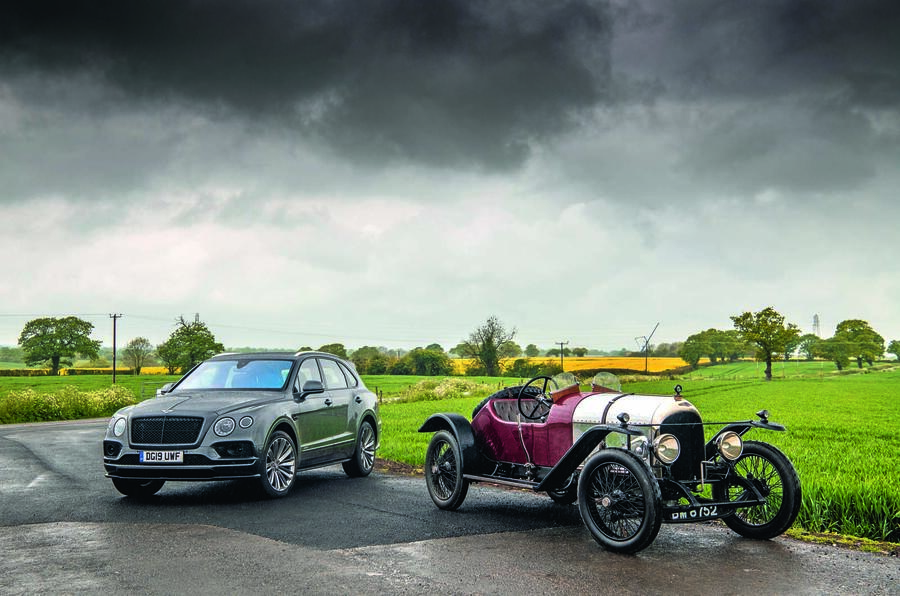
EXP2, by contrast, is very much alive and, despite its incalculable value, a car Bentley was happy to hand over to us for the day. We used it as we would any other car, so when we needed shots of the Bentley Bentayga taken from a moving platform, EXP2 briefly became the most valuable camera car in existence.
An abuse of the privilege of being able to drive such a car? Absolutely not: we treated it exactly how WO Bentley would have wanted.
WO is a much misunderstood man. He was a decent driver, good enough to come fourth in one of his own cars in the 1922 Tourist Trophy, but not a great. He was a fairly terrible businessman who lost control of his company less than five years after delivering its first production car. But he was one of the finest engineers this country has ever produced. Long before Bentley Motors, he was designing engines for World War I fighter aircraft that saved an untold number of lives because, unlike many others of that era, a Bentley BR1 or BR2 motor could usually be counted on to keep working. In the engines he designed for Bentleys, he pioneered the use of aluminium pistons, and fitted them all with overhead camshafts, four valves per cylinder and twin-spark ignition. So if you think they sound like reasonably modern innovations in the road car arena, be advised WO was doing it all a century ago.
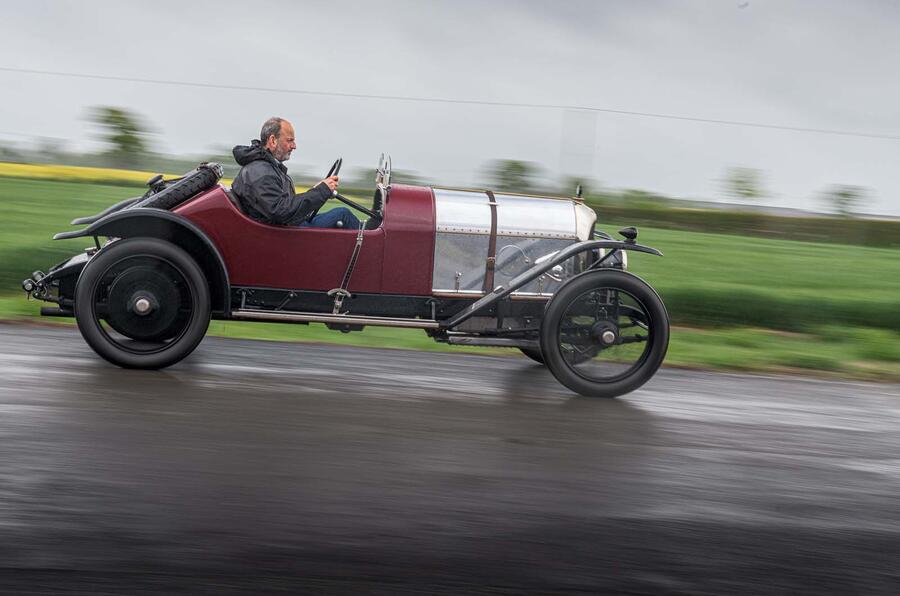
Yet – and this is where people get him wrong – the pursuit of ultimate performance was never his aim. His vision, stated unambiguously and in his own words, was for “a good car, a fast car, the best in its class”. Refinement was just as important to WO as power, which is why he rejected the efficient twin overhead camshaft layout because at the time it could not be made quiet enough. His desire to make the best possible car he could is what prompted none other than Ettore Bugatti to call them “the fastest lorries in the world”.
Even though his cars won Le Mans five times in seven years between 1924 and 1930, it was quality he sought most. In an era when normal cars were rickety, inexactly constructed and often highly unreliable jalopies, Bentley built cars that would travel tens of thousands of miles without so much as blowing a bulb. The strip-down report on one of the Le Mans-winning engines read, in its entirety, ‘nothing to report’.
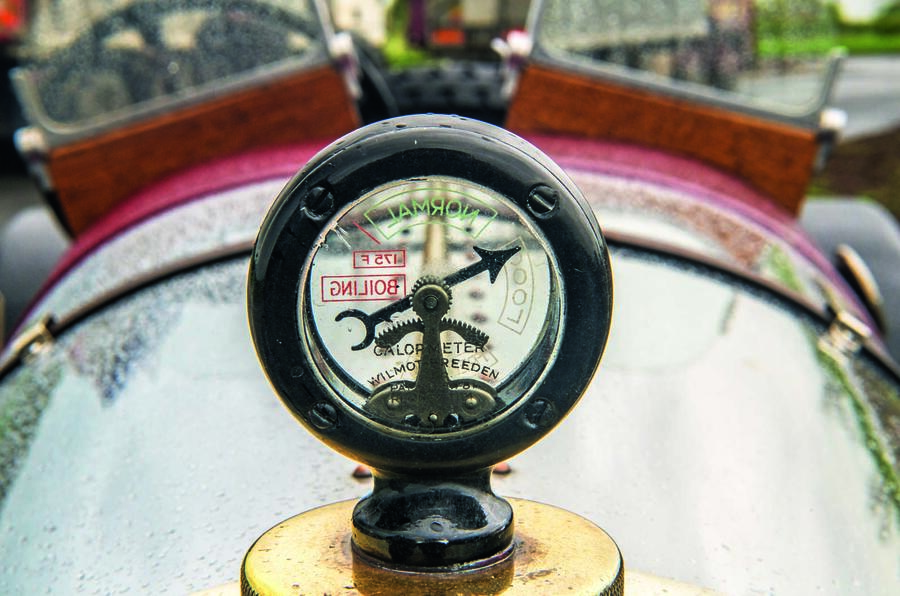
You can see the philosophy in EXP2. It is so primitive in so many ways, from its beaded-edge tyres and brakeless front axle to its centre throttle and resolutely synchro-free gearbox. But its 3.0-litre four-cylinder motor starts instantly and settles down to an idle so even, you feel it would burble away quite happily to itself until the tank ran dry. In fact it wouldn’t, but only because you have to pump the fuel from tank to engine by hand every few minutes.
It’s a beautiful and brilliant thing to drive. I doubt it has much more than 75bhp, but it also only weighs 658kg – about the same as a fully trimmed Caterham – so it goes way, way better than you expect. You travel from place to place at the same speed as everyone else, and while its 80mph top speed sounds distinctly modest by today’s measures, in 1919 it would have been easily twice that of the average car of the era. This was the Bugatti Chiron of its day.
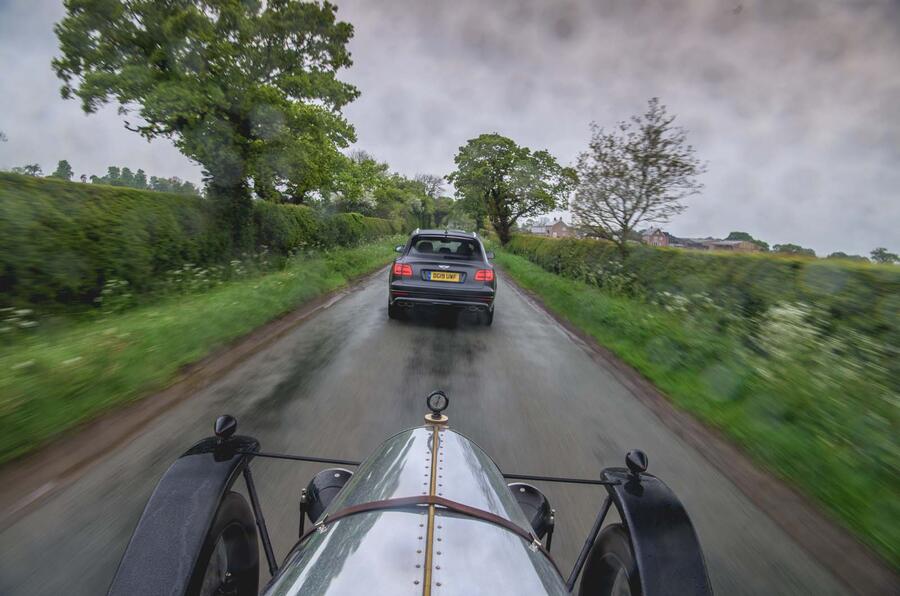
So I understand the temptation of looking at the imposing bulk of the Bentayga and wondering what happened. But the truth is that in many ways it’s not the modern car that’s the exception to the Bentley rule, but the old one. EXP2 was built as a test-bed prototype, hence its beautiful but rather flimsy and impractical super-lightweight body. As Bentley got into its stride during the 1920s, its cars got bigger and heavier: four years after the 3 Litre was introduced, Bentley was making 6.5-litre engines, which were eventually expanded to 8.0 litres and were often found in cars carrying vast limousine coachwork. WO used to drive one of these from Dieppe to the south of France without needing to use the lights – a staggering feat given the absence of anything that might pass for an autoroute.
It’s a journey you can see yourself doing in the Bentayga, and for much the same reasons. What mattered to Bentley then is what the Bentayga gives now. Speed and power, of course, but a sense of total engineering excellence that even today makes Bentleys stand out from those around them – or at least that is the perception they tend to create.
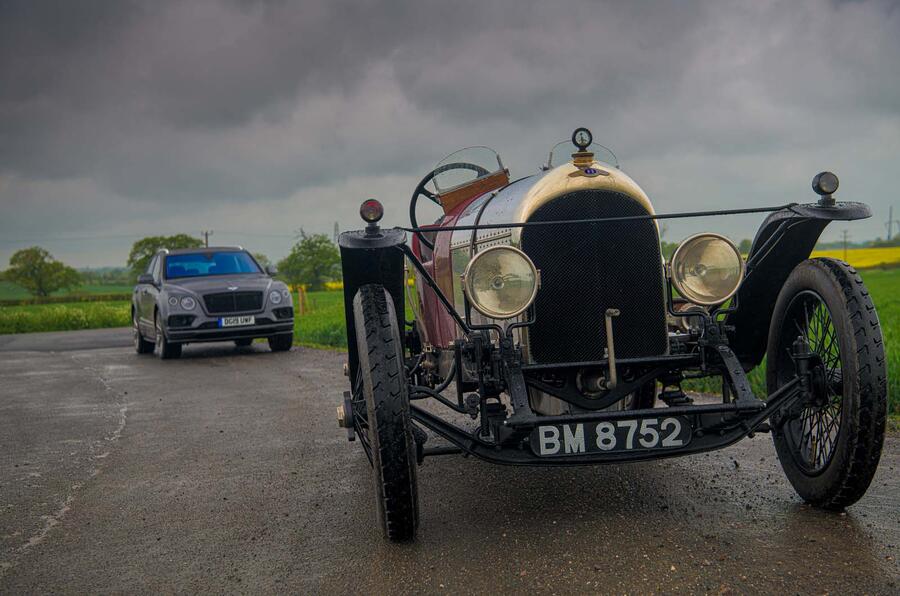
And while there are all sorts of things you may dislike about the Bentayga – its looks, its name, maybe even the class in which it resides – you cannot credibly dispute that it is anything other than a magnificently engineered car.
It feels massive, not just in size but construction, too, and that is and has always been a very Bentley trait, as is the effortless progress it provides. One very neat trick those skilled enough to master the confoundedly tricky gearbox of a 1931 8 Litre can demonstrate is to drive away from rest and change immediately into top (fourth gear) at little more than walking pace; and despite the revs falling to near zero on the beautiful but never very accurate Jaeger chronometric rev-counter, the car will just surge smoothly forward as if that were what it was born to do. In the modern idiom, the Bentayga Speed does the same. I remember discussing with another Bentley engineer, the great Uli Eichhorn, that the ultimate Bentley powertrain would be one with so much torque it didn’t actually need a gearbox at all. And ironically, once all-electric Bentleys are on sale, that is exactly what will happen – although I’m not sure that is what either of us had in mind at the time.

I don’t buy either that Bentley should not be building SUVs. If such a genre had existed in the 1920s, you can bet your house Bentley would have been building them. Thanks to the now almost completely lost but once great coachbuilding industry when you bought a Bentley all you actually purchased was a bare rolling chassis, for which an often bespoke body would be created by companies such as Vanden Plas, Freestone & Webb, HJ Mulliner, Thrupp & Maberly and many, many others. Bentleys were built as everything from racing cars to royal limousines. At least one was a hearse.
Versatility was what WO wanted for his cars, an ability to do anything its owner desired, and that is what the Bentayga offers today. You can sweep to the south of France or you can drive one up a river (I know, I have). For such a high and heavy device, it’s even quite capable in the corners, and vintage Bentleys were no better in their day. Back then if you wanted a pure sports car, you bought an Aston Martin, an Alfa Romeo or a Bugatti.
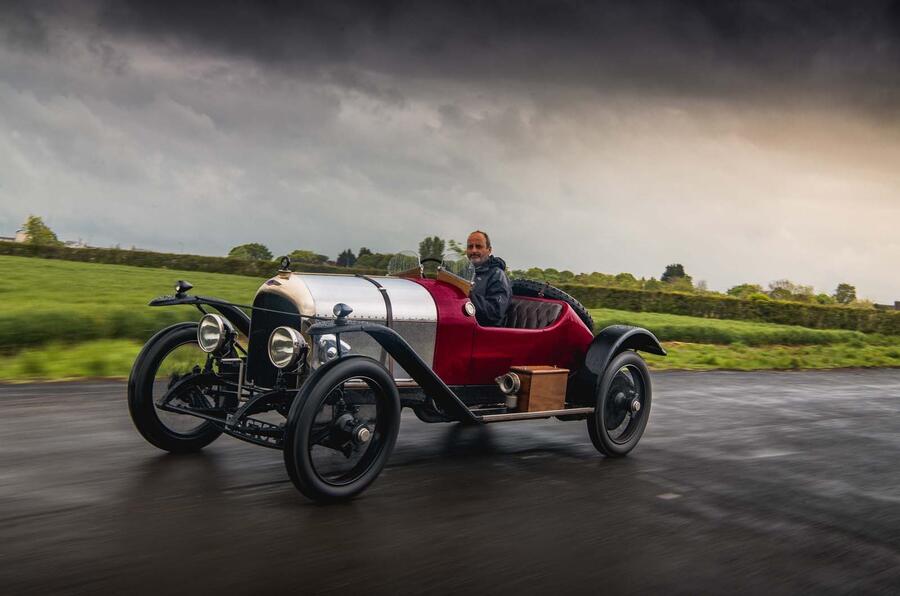
It was not just a privilege and profound pleasure to be allowed such freedom in EXP2, but a fascinating exercise, too. To barrel along, timing gearshifts, pumping fuel, managing the brakes and remembering the pedal layout, and to feel it respond so immediately and impressively to my every command, well, for someone like me, things rarely get better than that.
While in its quality and sporting nature you can see something of what WO had in mind, you have to remember that this was just a practice car, a first step towards proving a concept, a means to an end that would culminate a decade later in the 8 Litre titan that best expressed both his art and his engineering genius. And in the Bentayga’s power, heft, quality and versatility, those values endure to this day. I don’t know what WO would have made of the way the Bentayga looks, but I’m fairly sure were he to drive it, he’d not only be amazed but also proud that his name remains attached to a car that today, even after as much as 100 years, still strives to be “a good car, a fast car, the best in its class”.
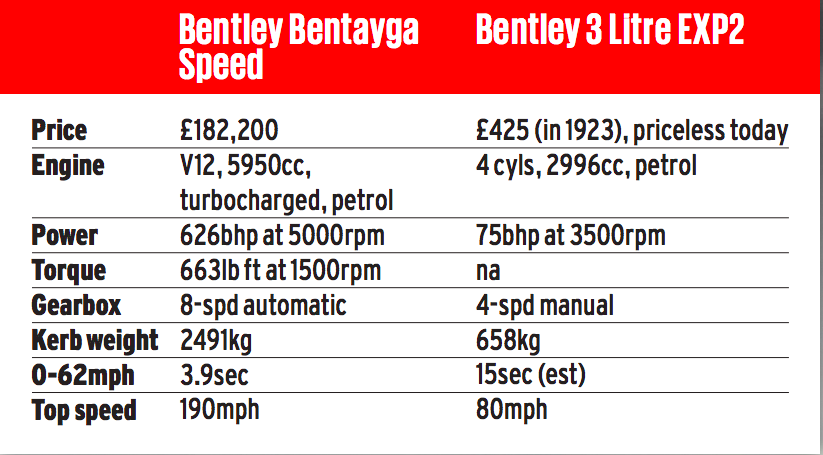
Bentley in motorsport
If one thread links all Bentley’s motorsport activities since its first outing as a factory team in 1922, it is that, bar a disastrous Indy 500 entry that year, it has never entered a race it did not stand a chance of winning outright. Class honours is not the Bentley way.
Space precludes detailing every pre-war Le Mans win, but they put Britain on the motor racing map. The sadness is that once the job was complete, Rolls-Royce bought the company and that was that. It would be 70 years before a factory Bentley raced again. Once more it was Le Mans, but this time VW paid the bills. The three-year programme ended with a record-breaking win in 2003, the winning car travelling farther and spending less time in the pits than any in Le Mans history.
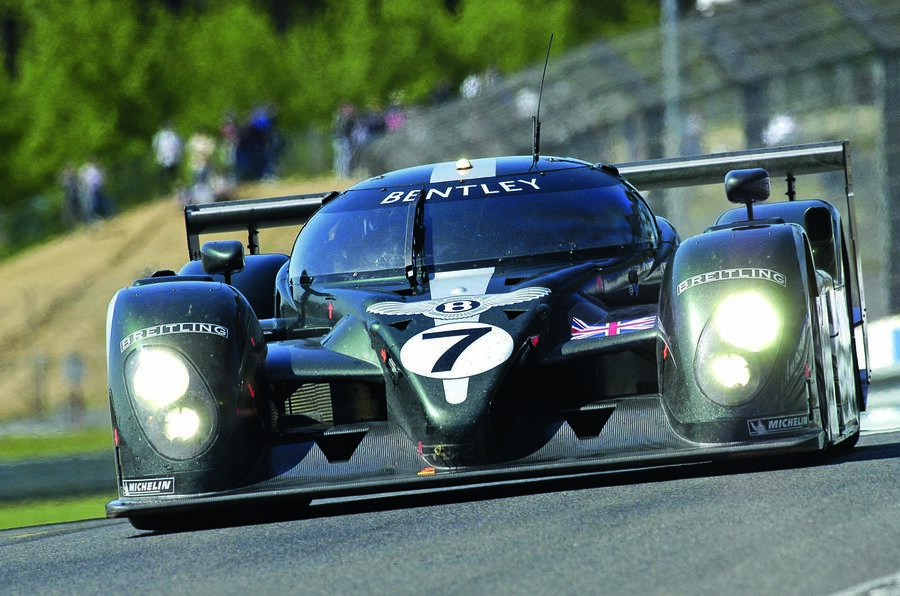
A new prototype to celebrate the centenary got canned post-Dieselgate, so now Continental GTs race successfully in GT3. Look inside one and there, amid all the flickering screens and bewildering banks of controls, you’ll see the paddle shifters and door pulls from a Mulsanne. Even today, doing it the right way is still important to Bentley. Long may it remain.
Autocar’s Bentley memories
Richard Bremner: You could see the distant drifts of smoke, hear the tyres squealing like scrapping cats. But the extermination of Pirellis made identification difficult, until some rare MIRA sunlight caught a flank. Reflecting it was the silhouette of a big, formal saloon pirouetting within its own length. A Bentley Mulsanne Turbo, savagely demonstrating how this half-forgotten marque was going to be restored to glory.
Steve Cropley: A lovely guy called Ray Wiltshire once allowed me to drive his beautiful Bentley 3 Litre through rural France. I’d driven crash-gearbox, central-throttle cars before, but never in public. Managed a succession of quiet gearchanges on which Ray lavished much praise, but it was the car, not me. It’s why, one day, I still want my own ‘WO’.
Andrew Frankel: Belgium, Luxembourg, France, Germany, Switzerland, Liechtenstein, Austria, Italy, Slovenia, Bosnia and Herzegovina, Croatia, Slovakia, Hungary, the Czech Republic and Poland. Last year I drove a Bentley Continental GT through 15 countries in 24 hours, during which it proved that the 100-year-old vision of its founder remains alive and well to this day.
Damien Smith: Forget Aston Martin, James Bond was a Bentley man – or at least he was in the original Ian Fleming books, as I discovered when I started reading them avidly as an 11-year-old. Bond continuation writers kept the Bentley link going, John Gardner featuring his 007 driving to Monte Carlo in a Mulsanne Turbo. It suited him perfectly – (whisper it) more than a DB5.
Matt Prior: Every time I see a Bentley steering wheel, I’m tickled. They’re hand-sewn and, to mark the spacing between stitches, each needleworker pricks the leather with a spacing tool: it’s a kitchen fork. The distance between prongs denotes the gap, and each worker brings their own, so each wheel rim, inside a picometre-perfect cabin, has a stitch pattern uniquely defined by cutlery.
Read more
Bentley Bentayga Speed 2019 review
Goodwood Festival of Speed 2019: Bentley's centenary celebration​
Bentley rounds off centenary trio with Continental Number 1 Edition​

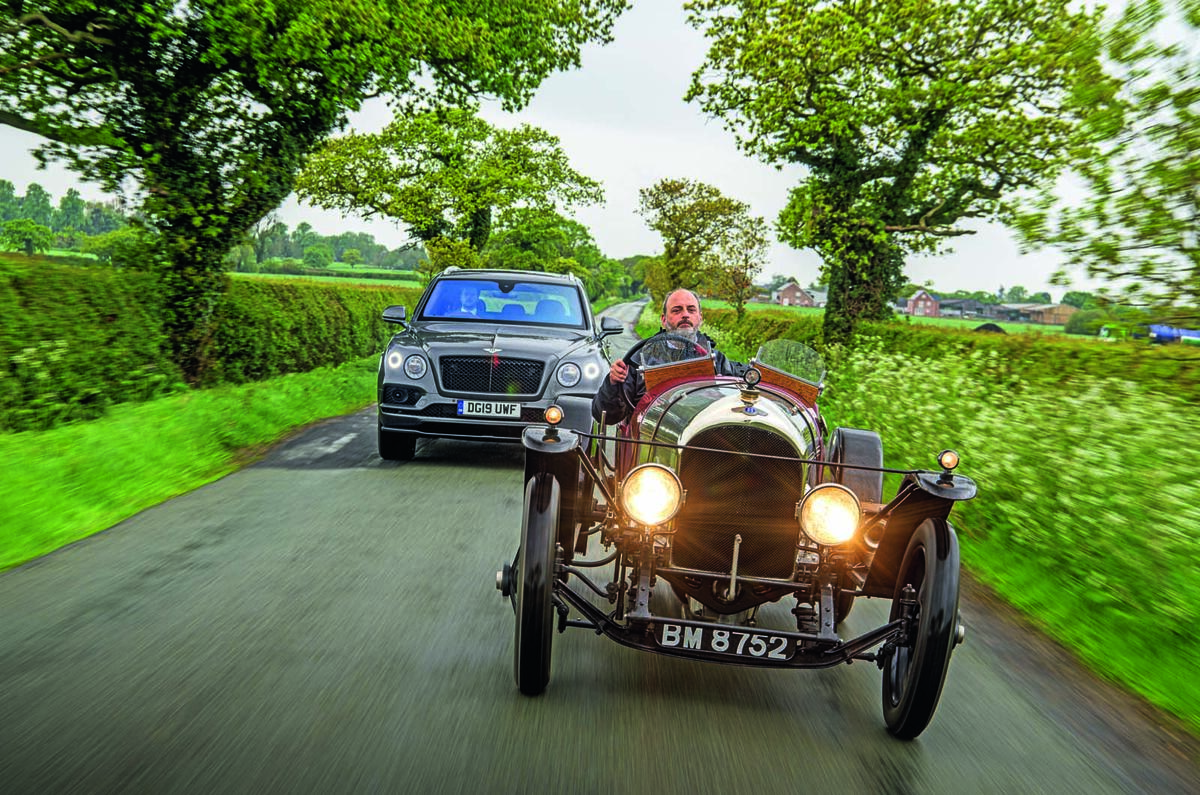
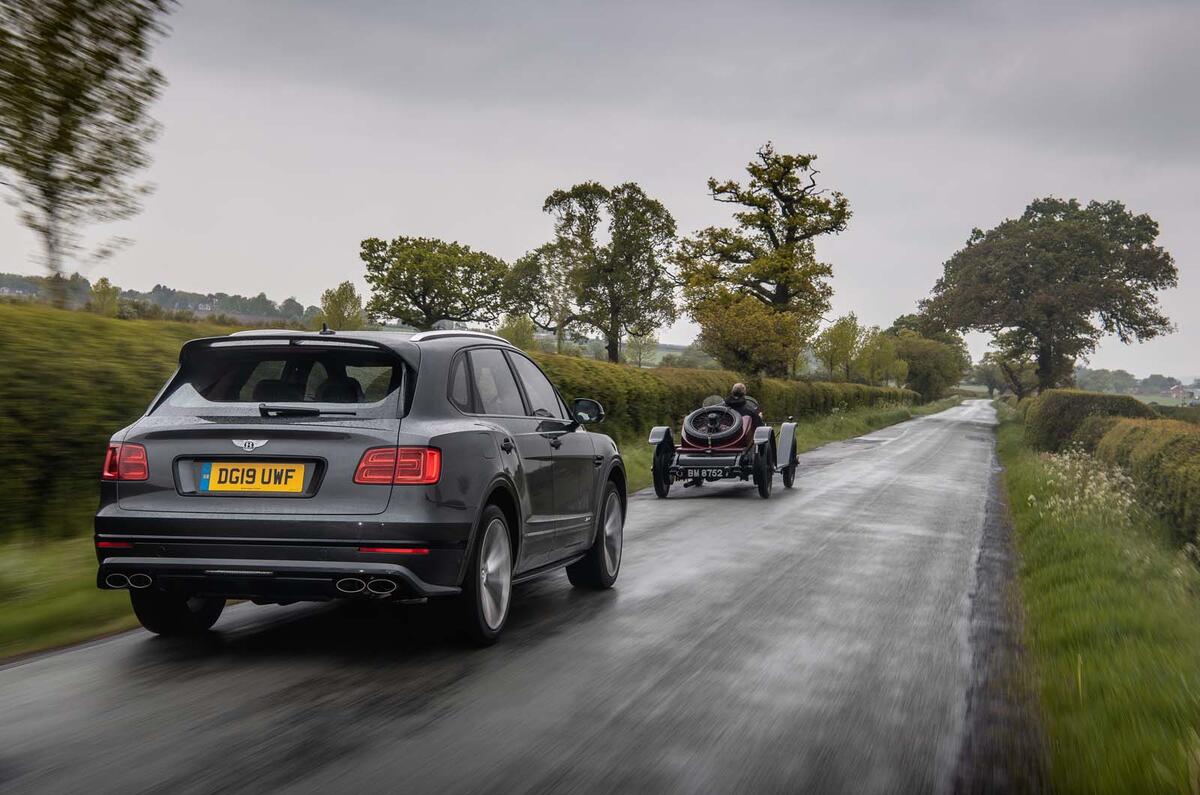
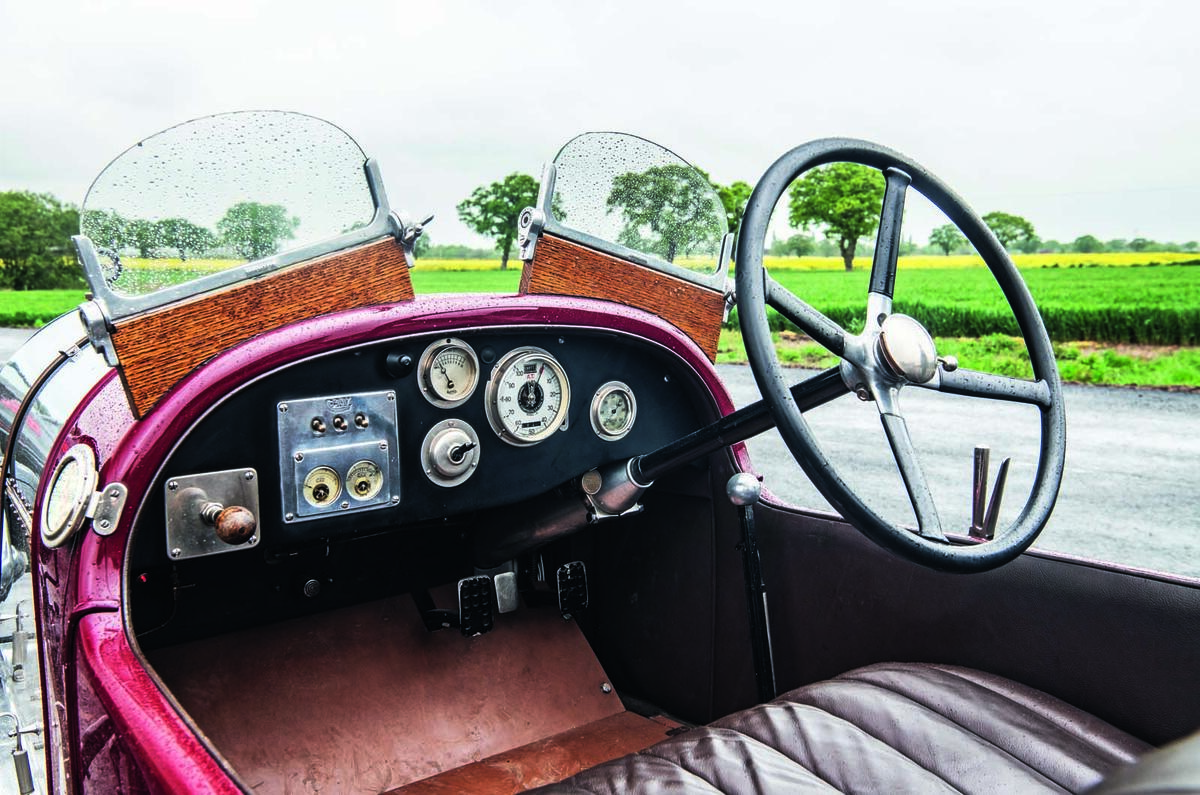
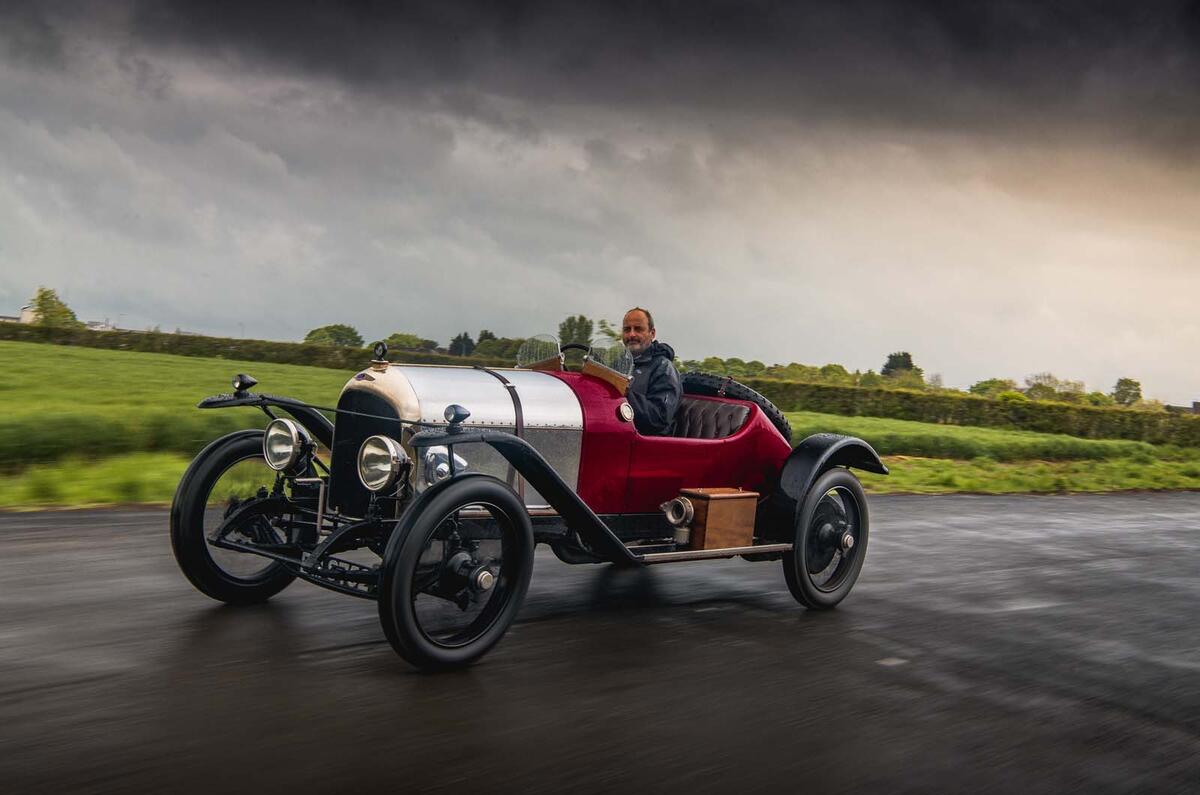
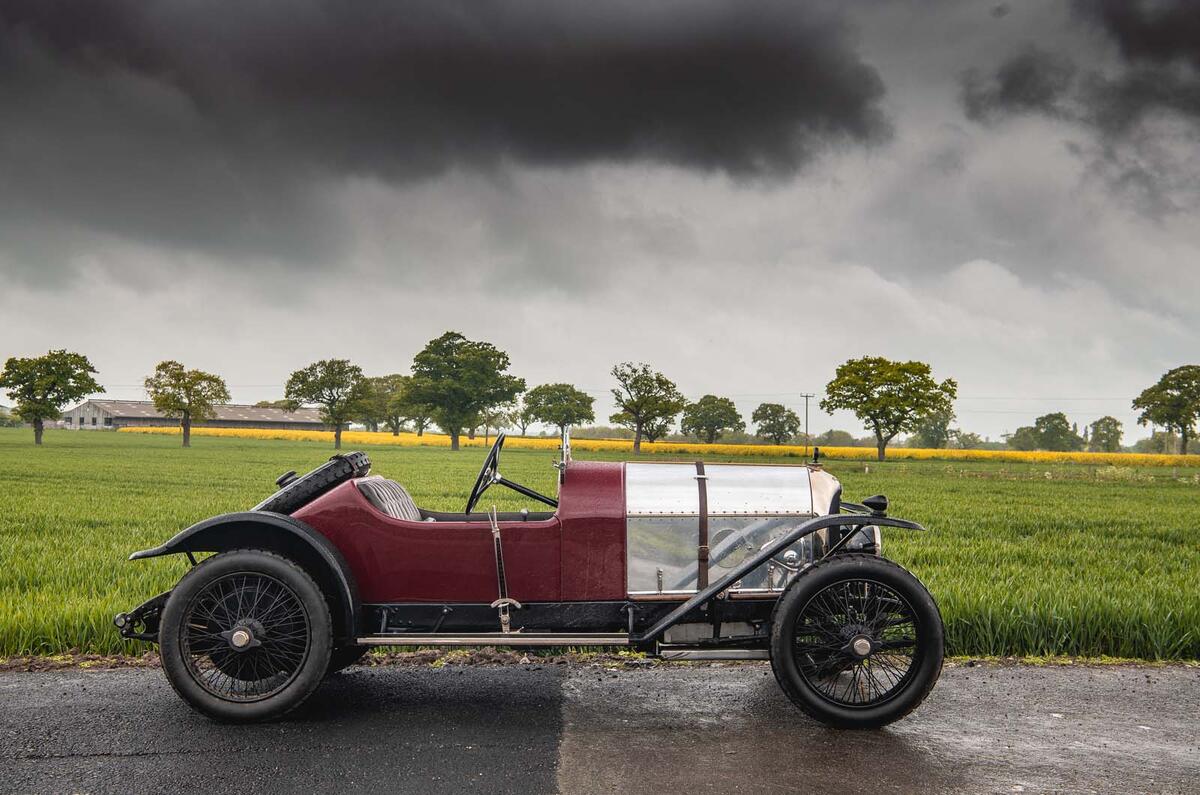


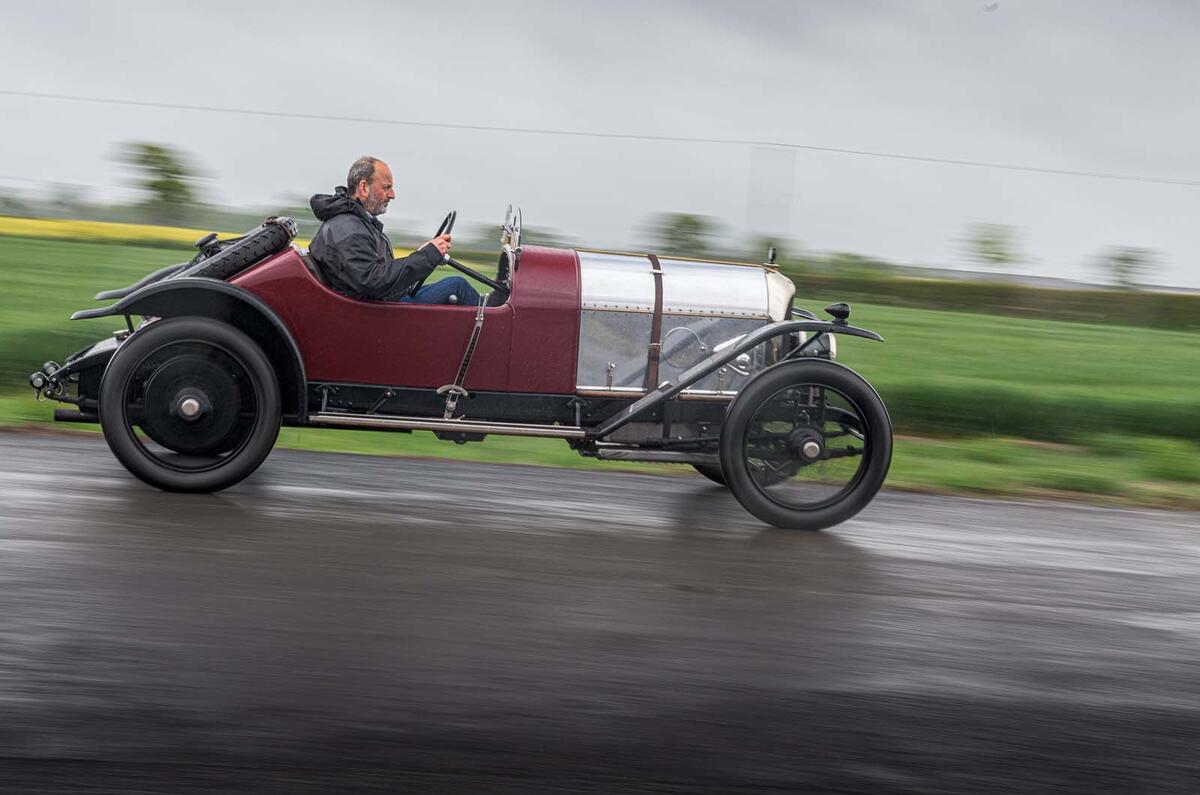
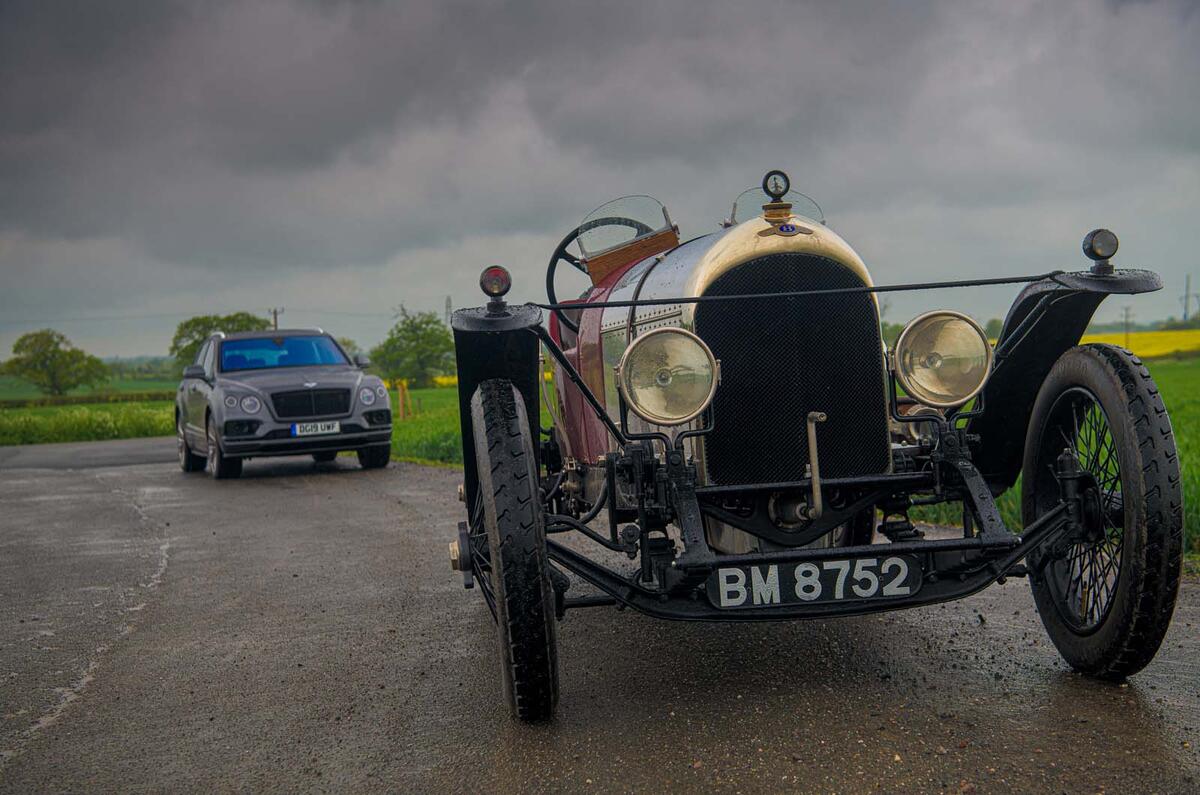
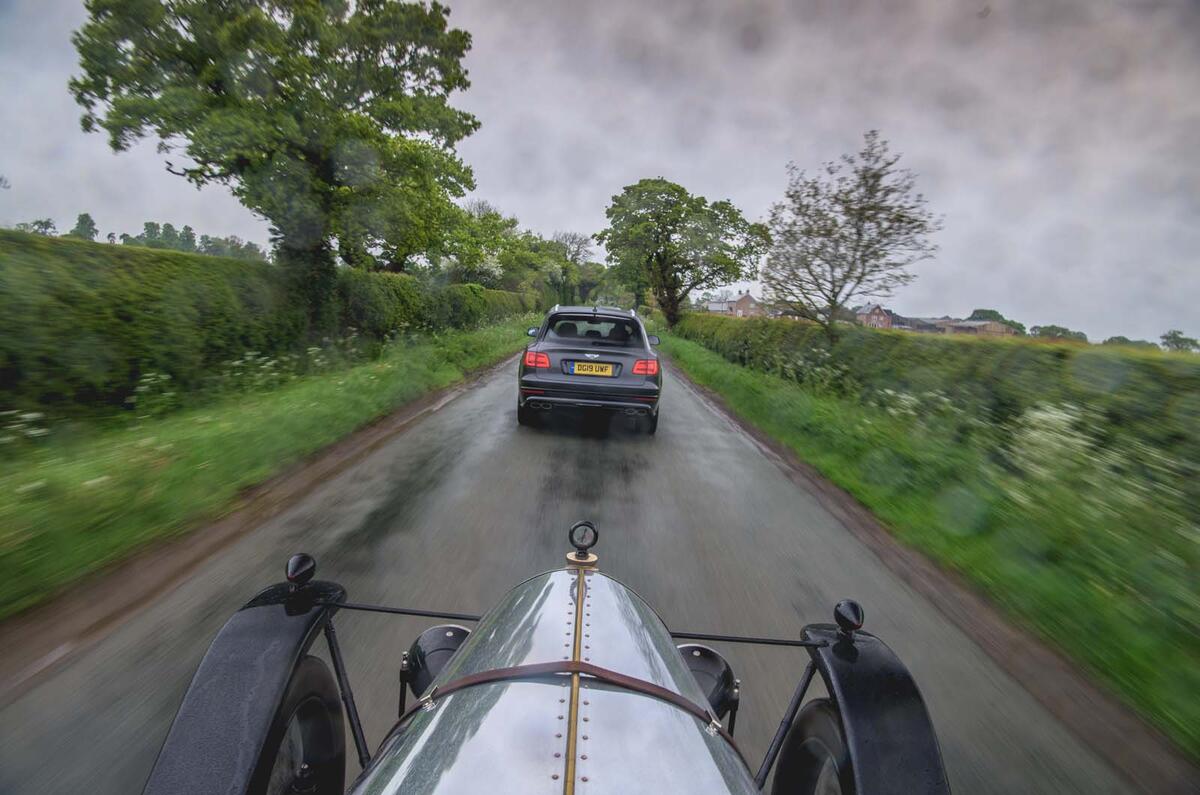
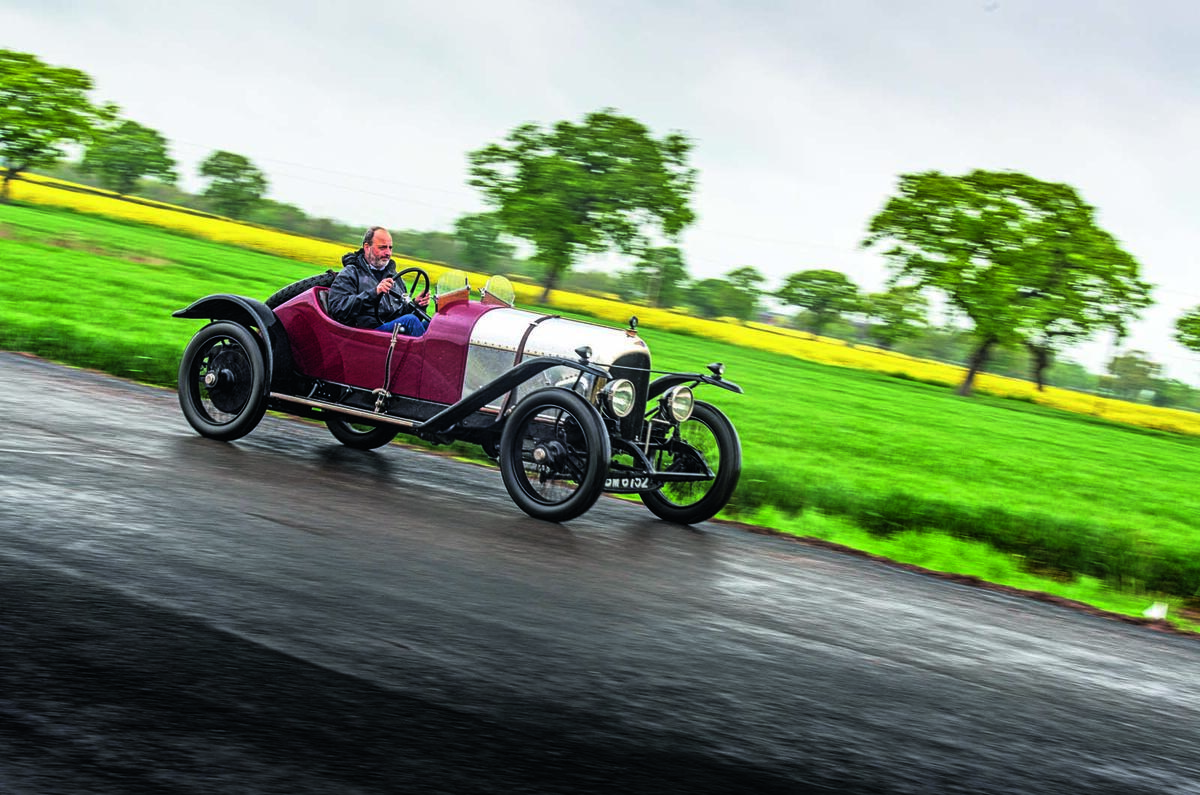

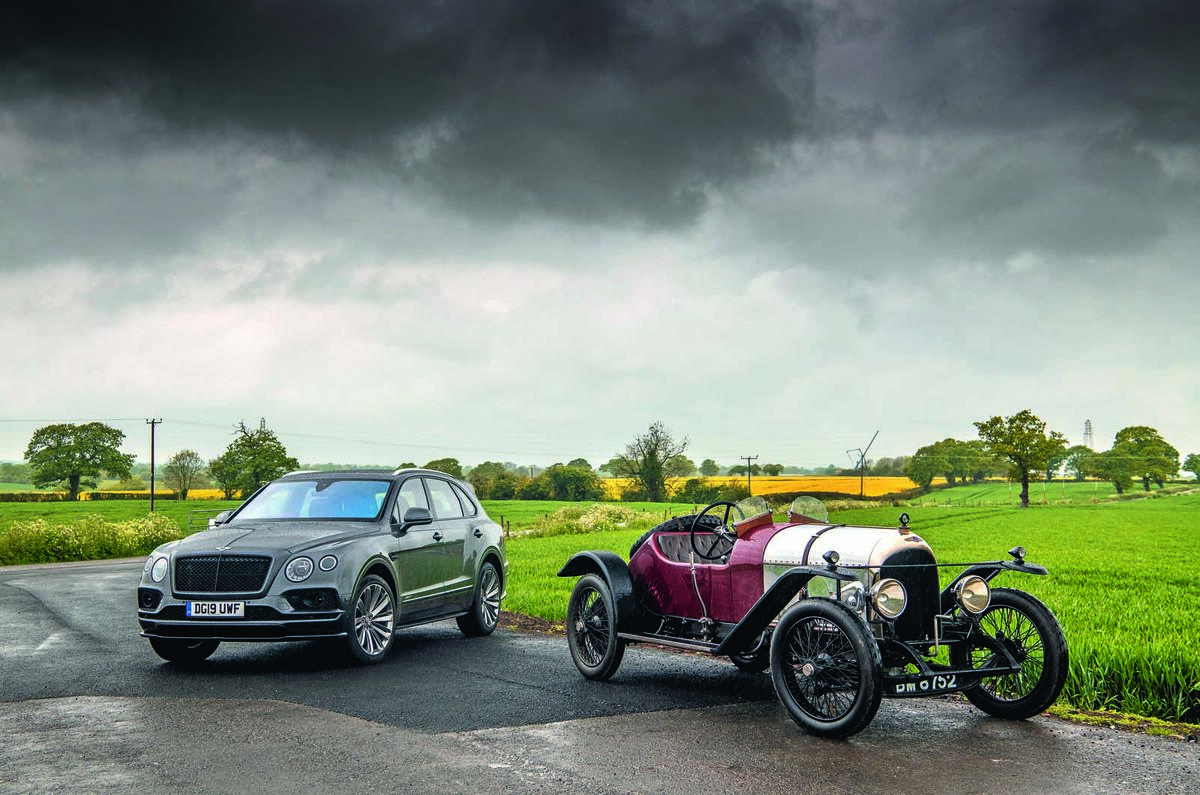



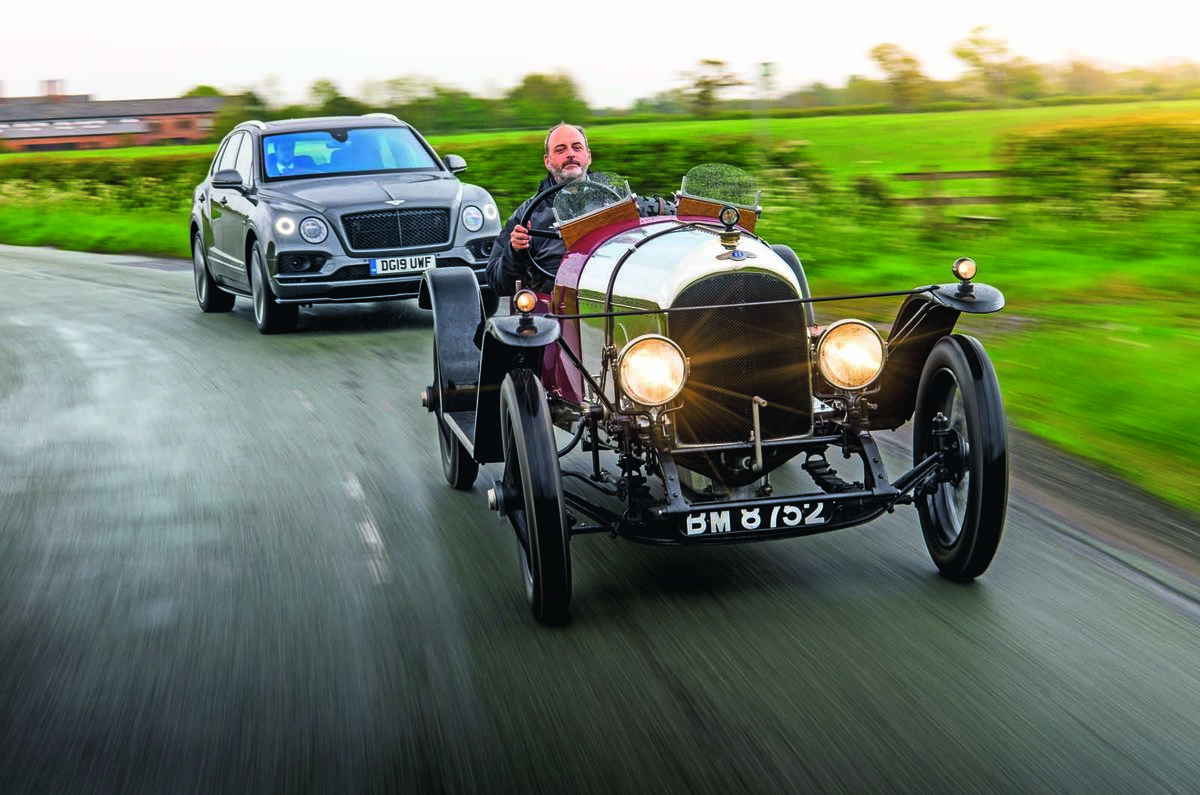



















Join the debate
Add your comment
£182k
For an Audi Q7 in a posh ugly frock.
A historically revolting abomination
I’d like to think that the Bentayga will be long forgotten in 100 years time - in fact I wish I could forget it now, but what is seen can not be unseen.
If EXP2 was anthropomorphised imagine how ashamed it would be of its great grandchild.
V12
Does anyone proof read these purile ramblings?
Haha!!
Try proof reading your own posts.
It's puerile, you half-wit!
Brian 245, eh? I'll look out for you in future.
beechie wrote:
Unfortunately the site has no provision for corrections of posts.
The feature still reads V12, not W12 which is the salient point.
I'll refrain from the name calling.
It gets better!
You attempt to gain the moral high ground by refraining from 'name calling', yet it was you who called the writer 'purile' in the first place.
Careless, illiterate and a hypocrite.
I'll be watching you, brian245.